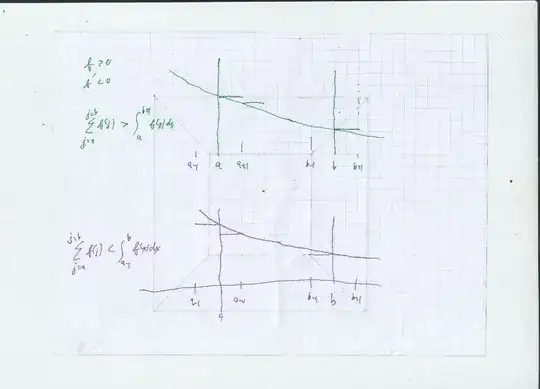In the very beginning, I'm going to refer to an already posted question quite similar to mine:
And, to give an insight into what I've examined already:
Compute: $$\lim_{n\to\infty}\frac{1+\frac1{\sqrt[3]{2}}+\ldots+\frac1{\sqrt[3]{n}}}{\sqrt[3]{n^2}}$$
My attempt:
As in the references, I also thought of applying Stolz-Cesaro, and got the following:
$L=\lim\limits_{n\to\infty}\frac{1+\frac1{\sqrt[3]{2}}+\ldots+\frac1{\sqrt[3]{n}}}{\sqrt[3]{n^2}}=\lim\limits_{n\to\infty}\frac{\sum\limits_{k=1}^{n+1}\frac1{\sqrt[3]{k}}-\sum\limits_{k=1}^n\frac1{\sqrt[3]{k}}}{\sqrt[3]{(n+1)^2}-\sqrt[3]{n^2}}=\lim\limits_{n\to\infty}\frac{\frac1{\sqrt[3]{n+1}}}{\sqrt[3]{(n+1)^2}-\sqrt[3]{n^2}}$
To avoid L'Hospital, I've done this: $\begin{aligned}L&=\lim_{n\to\infty}\frac1{\sqrt[3]{n+1}\left(\sqrt[3]{(n+1)^2}-\sqrt[3]{n^2}\right)}\\&=\lim_{n\to\infty}\frac{1}{n+1-\sqrt[3]{n^2(n+1)}}\\&=\frac1{\infty-\infty}\\&=\frac1{\infty}=0\end{aligned}$
I was wondering if there were another elegant method apart from Riemann sum or already used Stolz-Cesaro that I could use because this task appeared in Analysis 1 exam. Stolz-Cesaro is allowed and there was no constraint on any other methods, but I'm not familiar to Riemann sums at all.
To ask explicitly(for the sake of developing new ideas):
For example: If I changed the order of the summands this way: $$\frac{1}{\sqrt[3]{n}}+\frac{1}{\sqrt[3]{n-1}}+\ldots+\frac{1}{\sqrt[3]{2}}+1$$ would that be of any use in an algebraic manipulation that would lead me on the right track? Final question: Is my answer:$L=0$ correct?
